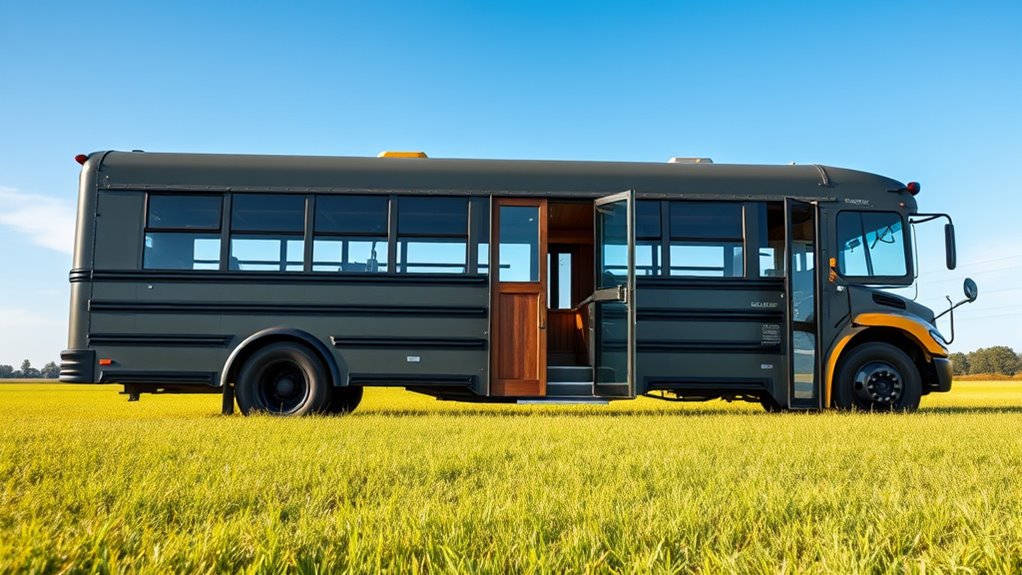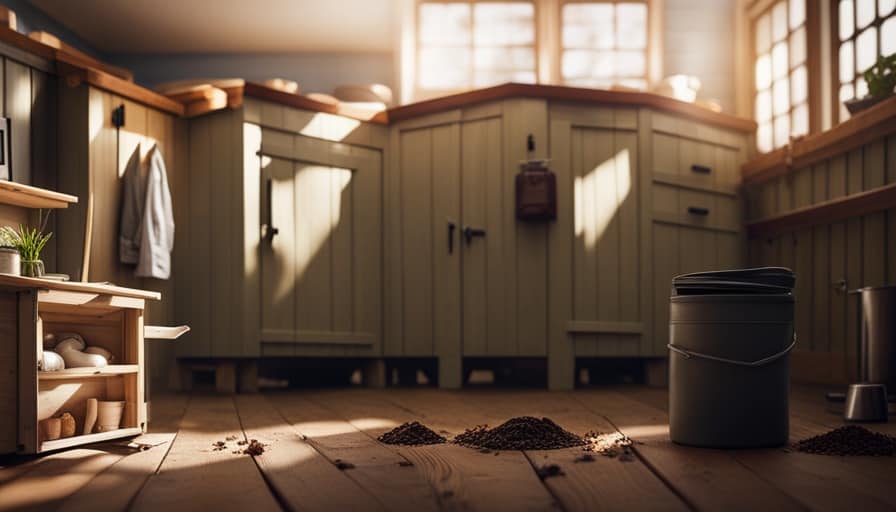If you’re considering transforming a school bus into a luxury tiny home, understanding the real costs involved is essential. From purchasing the bus to outfitting it with high-end amenities, expenses can add up quickly. But just how much will your project truly require? The numbers may surprise you, and knowing them could make all the difference in planning your mobile retreat. Let’s explore what it really takes to turn this idea into reality.
Key Takeaways
- Total conversion costs typically range from $20,000 to $100,000, depending on scope and materials.
- Major expenses include bus purchase, insulation, electrical, plumbing, and custom furnishings.
- DIY projects can reduce costs but may extend project timelines and require skill.
- Incorporating luxury features like solar power, high-end appliances, and custom cabinetry increases budget.
- Ongoing costs such as insurance, maintenance, and permits should be factored into overall project planning.

Transforming a school bus into a luxury tiny home is an innovative way to combine mobility with comfort. When you consider vehicle conversion, you’re fundamentally turning a simple bus into a custom living space, which requires careful planning and precise execution. One of the most critical steps in this process is budget planning. Knowing how much you want to spend upfront helps you set realistic expectations and prioritize features that matter most. It’s easy to get carried away with luxurious finishes or high-end appliances, but without a clear budget, costs can spiral out of control. To start, list all essential expenses: the bus purchase, materials, tools, and labor if you’re hiring professionals. Then, add optional upgrades, such as solar panels, custom cabinetry, or high-end fixtures, which can considerably increase your total investment.
When it comes to vehicle conversion, you need to assess the condition of the bus thoroughly. Look for rust, engine issues, or structural damage because these problems will add to your costs if not addressed early. Decide whether you’ll do the conversion yourself or hire experts; DIY conversions can save money but demand time, skills, and patience. In either case, understanding the scope of work involved helps you allocate your budget more effectively. For example, removing and reconfiguring the interior might seem straightforward, but if you’re installing electrical systems, plumbing, insulation, or custom furniture, expenses can add up quickly. Additionally, understanding vintage decor options allows you to incorporate charming, rustic elements that enhance the cozy aesthetic without overspending.
A well-planned budget also considers ongoing costs like insurance, maintenance, and parking fees, which are often overlooked during initial planning. These expenses are crucial to ensure your tiny home remains functional and legal on the road. Additionally, factor in the cost of permits and inspections, which vary depending on your location. If you’re looking to maximize your budget, consider second-hand materials or repurposing items to cut costs without sacrificing quality.
Ultimately, vehicle conversion requires balancing your dream features with your financial limits. With detailed budget planning, you can make informed decisions that keep your project on track and within your means. Remember, the goal isn’t just a beautiful tiny home but one that’s sustainable and affordable long-term. By carefully considering each element—from the vehicle’s condition to your desired upgrades—you’ll turn your school bus into a luxurious, mobile retreat that fits your lifestyle and budget. The key is to stay organized, prioritize essentials, and be flexible about how and where you allocate your funds, ensuring your tiny home project is as successful as it is inspiring.
Conclusion
Transforming a school bus into a luxury tiny home is a smart investment, costing between $40,000 and $80,000 for a high-end finish. Did you know that the average used bus costs just $6,500? With careful planning and budgeting, you can create a stylish, functional mobile retreat without breaking the bank. It’s a unique way to enjoy the freedom of tiny living while customizing your space to fit your lifestyle perfectly.
Hi, I’m Emma. I’m the Editor in Chief of Tiny House 43, a blog all about tiny houses. While tree houses are often associated with childhood, they can be the perfect adult retreat. They offer a cozy space to relax and unwind, surrounded by nature. And since they’re typically built on stilts or raised platforms, they offer stunning views that traditional homes simply can’t match. If you’re looking for a unique and romantic getaway, a tree house tiny house might just be the perfect option.










